My Visit to Hays Kansas was sponsored by Visit Hays and Creekside RV Resort
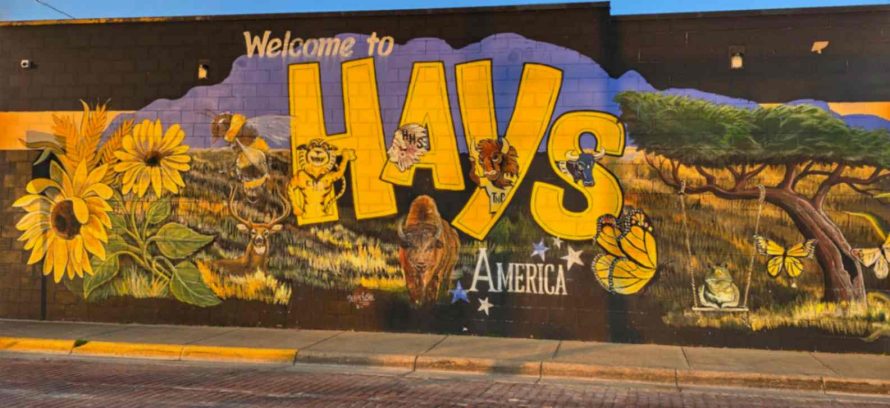
Driving west from Abilene, I wasn’t sure what to expect from Hays, Kansas. What I found was a town layered in history—once a rough-and-tumble frontier post at the edge of the Great Plains, now a place that quietly preserves the legacy of Buffalo Bill Cody, Volga German settlers, and the cavalry troops stationed at Fort Hays. Over two days, I walked the same ground once patrolled by soldiers and pioneers, visited museums that tell stories beyond textbooks, and stood in places where history was made. I explored the local landmarks, historical sites, and lesser-known corners that reveal the true heart of Hays.
Ft Hays
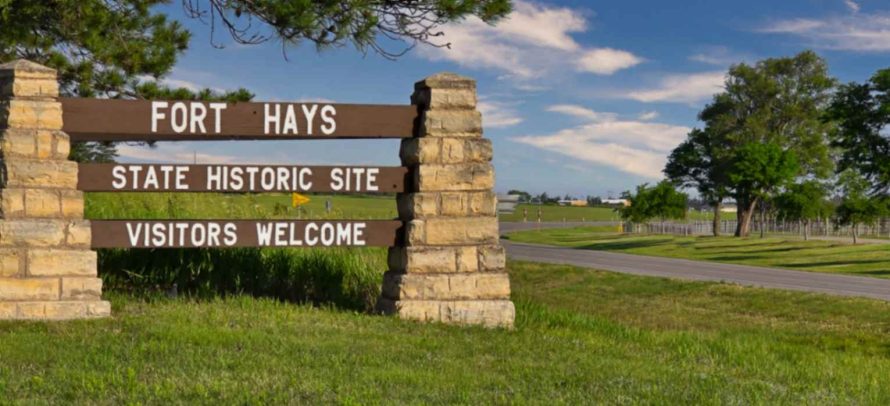
Established in 1865 as Ft Fletcher to protect stagecoach and freight wagons, the fort was closed in May the following year. In October of the same year the fort was reopened and renamed Ft Hays in honor of BG Alexander Hays who was killed in the Civil War. Eventually encompassing around 7,500 acres.
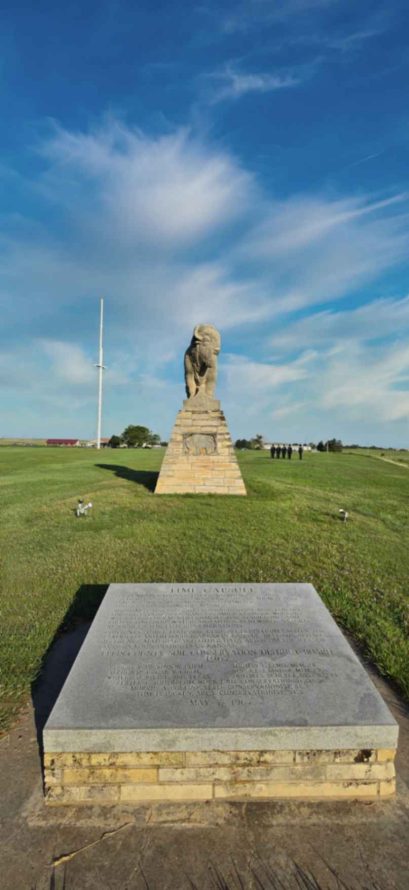
Ft Hays continued to be used as a base of operations for combat troops and as a supply point for other nearby forts. Before closing in 1889, Generals Sheridan and Custer, as well as the 7th Cavalry, Buffalo Bill Cody, Wild Bill Hickok, elements of the Buffalo Soldiers 10th Cavalry and other US Army units passed through the fort.
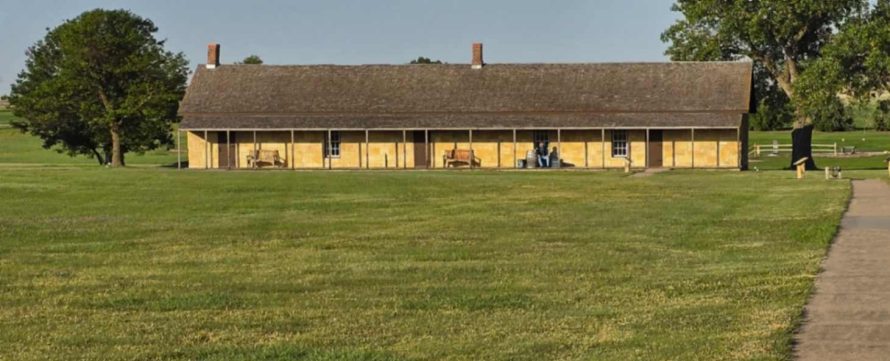
Built in 1867, the blockhouse, and the guardhouse, added in 1872, now showcase exhibits detailing the fort’s history, its construction, and the daily lives of the soldiers who once served there.
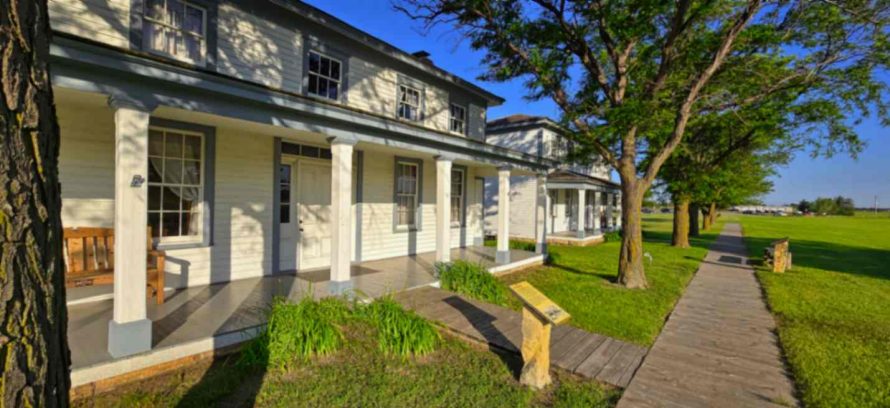
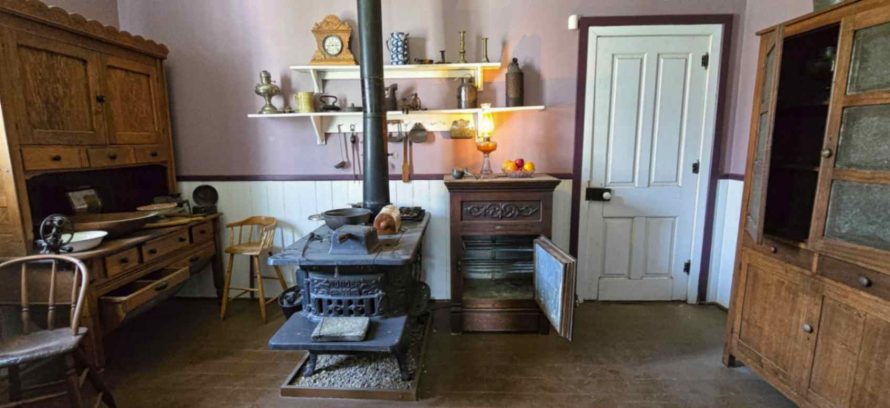
Two restored officers’ quarters, furnished with period pieces from the 1860s to the 1880s, offer an authentic glimpse into the fort’s active years.
Hotels in Hays Kansas
Bison Herd
One of Hays’ most unique attractions is the bison herd in Frontier Park—a living link to the Wild West. The story starts with James “Scotty” Philips, a rancher who once knew Sitting Bull and saw firsthand how quickly the great bison herds were disappearing. Determined to help preserve the species, Scotty shipped five bison from his ranch near Pierre, South Dakota, to Hays in 1916.
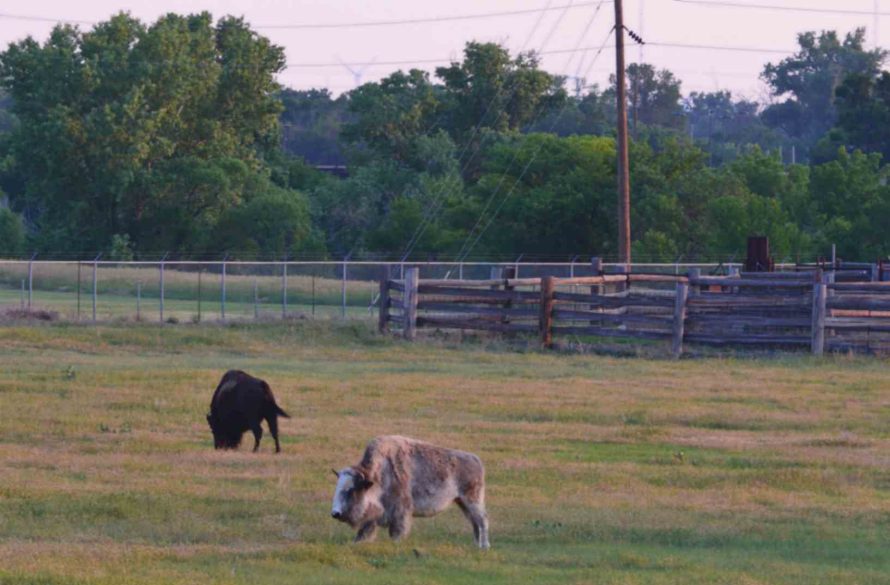
Over the years, the herd changed hands—from the Experiment Station to Fort Hays Normal School—and finally found its permanent home in Frontier Park in 1953 with a pair of bison named Wild Bill and Calamity Jane. By the late 1970s, the City of Hays took over, and the tradition continues today. Visitors can often spot Ace, the massive bull, alongside several cows and the new calves born each spring.
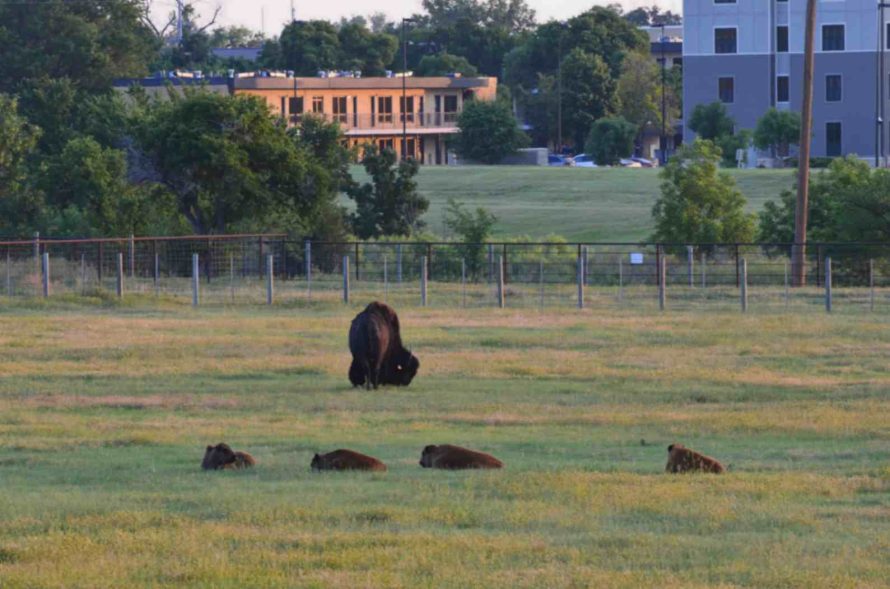
In 2017, the herd gained a rare resident—Ghostbuster, a white bison donated by a local rancher—instantly becoming a local celebrity. Standing along the fence in Frontier Park and watching these majestic animals graze is like stepping back to a time when this region was home to the largest bison population in North America, numbering in the millions. If you’re exploring Hays, this stop is a must—part history lesson, part wildlife experience, and entirely unforgettable. The Bison herd is located at Frontier Park, West Highway 183 Bypass Alternate.
Murals, Sculptures, Historic Plaques
Murals in Hays
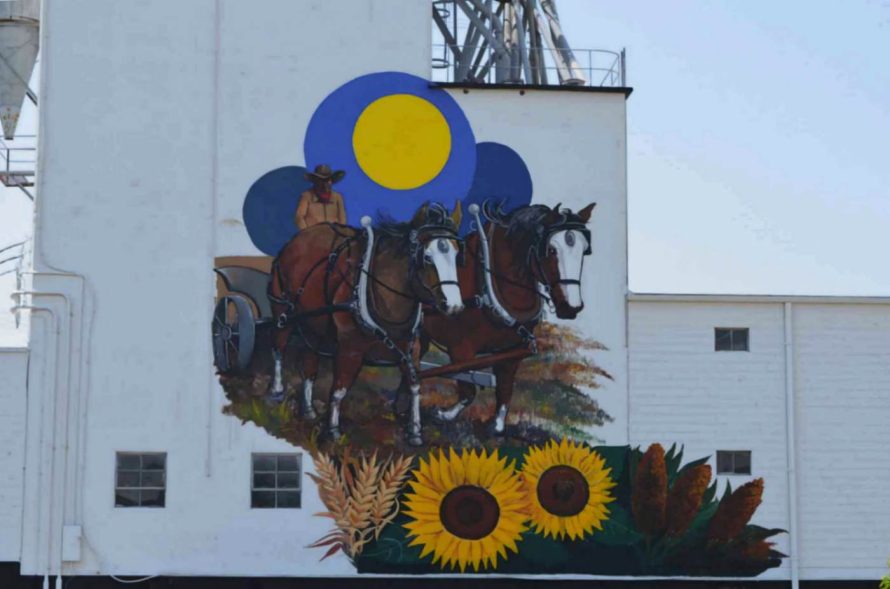
As I walked through Hays, I kept coming across large, detailed murals painted on the sides of old buildings. Some showed scenes from the town’s past, others highlighted its German roots or prairie landscapes. They weren’t just pretty backdrops—they felt like small pieces of history told through art.
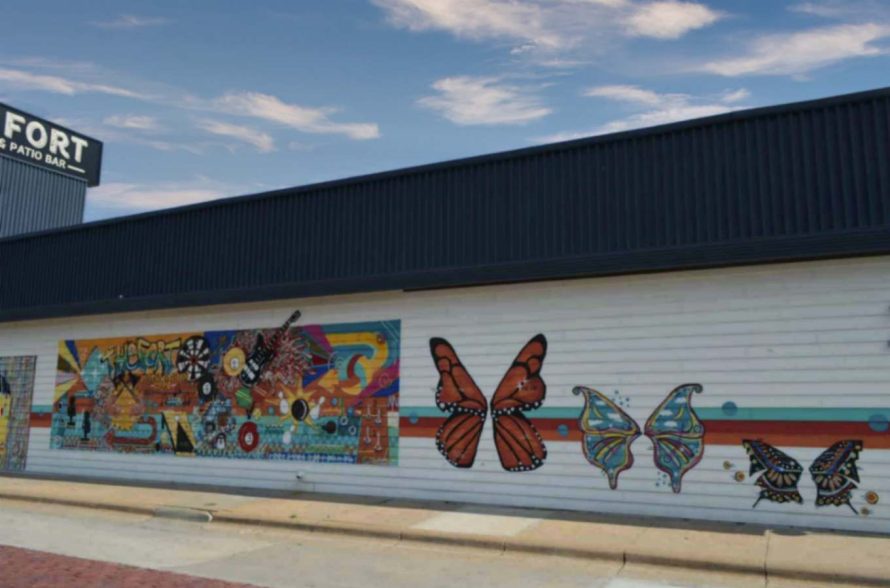
I found myself slowing down to take in the details and noticing how each one connected to the town’s story.
Downtown Historic Plaques
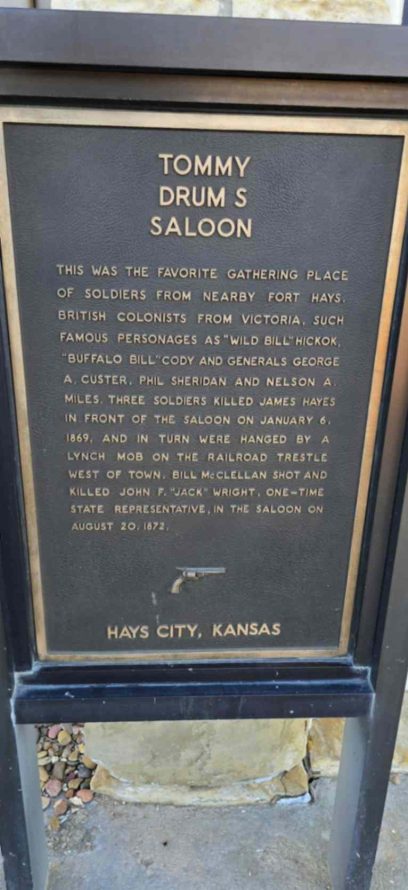
In downtown Hays, I noticed small bronze plaques along the sidewalks and mounted on buildings. Each one described something that once happened there—a building’s original purpose, a notable resident, or a moment that shaped the town. Reading them as I went gave me a clearer picture of what this place was like when the streets were full of frontier life.
Statues in Hays
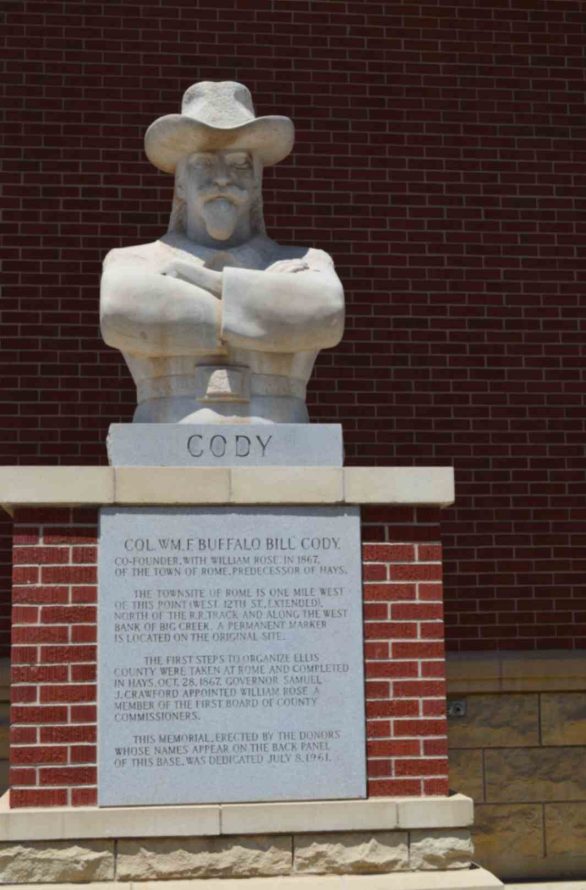
Around town, I came across several statues—some in parks, others tucked into quiet corners. Each had a small sign explaining who or what it represented, from local historical figures to reminders of the region’s connection to Fort Hays. All of these were the result of an extraordinary man, Pete Felten. I had the opportunity to meet Pete and learn about this Kansas legend. Standing in front of them made it easier to connect the dots between what I’d read in the history books and the actual place I was visiting. Read all about Pete Felten here.
Sternberg Museum of Natural History
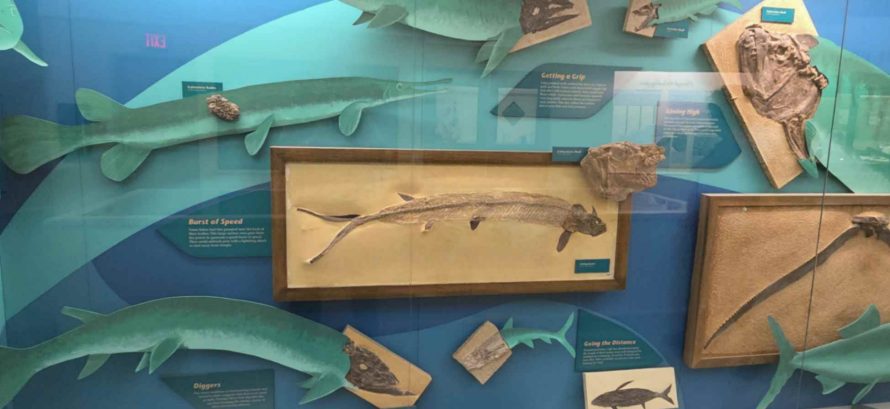
The Sternberg Museum of Natural History in Hays was inspired by the remarkable legacy of George F. Sternberg, a famed fossil hunter whose discoveries helped shape the field of paleontology. Construction of the current facility began in the mid-1990s, with the goal of creating a world-class space to house Fort Hays State University’s extensive fossil and natural history collections. It opened to the public in 1999, designed not just as a museum, but as a gateway into Kansas’ prehistoric past and a hub for scientific research.
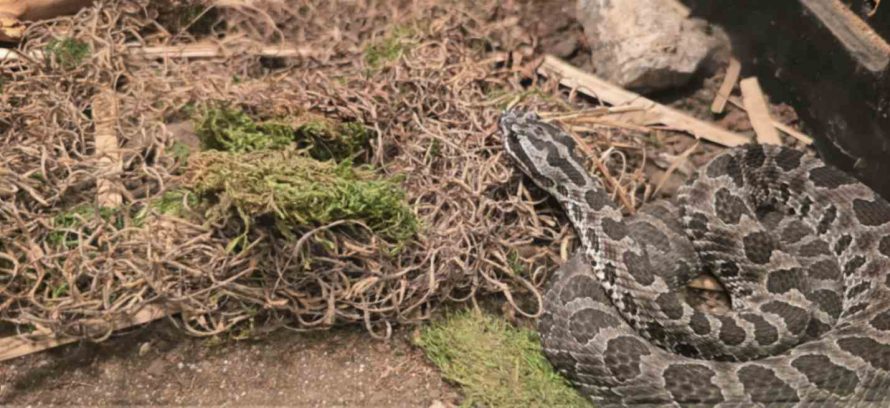
If you like reptiles, they have a huge collection of rattlesnakes from around the US. But, beyond its striking exhibits, the museum plays an important role in the global study of paleontology, geology, and biodiversity. Its collections are a valuable resource for scholars who study everything from ancient marine life to Ice Age mammals, helping to expand our understanding of life on Earth. The crown jewel is the “fish-within-a-fish” fossil—an 80-million-year-old moment frozen in stone, discovered by Sternberg himself. Life-sized dioramas bring these long-lost worlds to life, from marine reptiles gliding through deep waters to mammoths roaming the plains. For travelers passing through Hays, it’s not just a stop—it’s a place where the wonder of discovery meets the importance of preserving and studying our planet’s deep history.
Kansas Merci Boxcar & Veterans Memorial Park
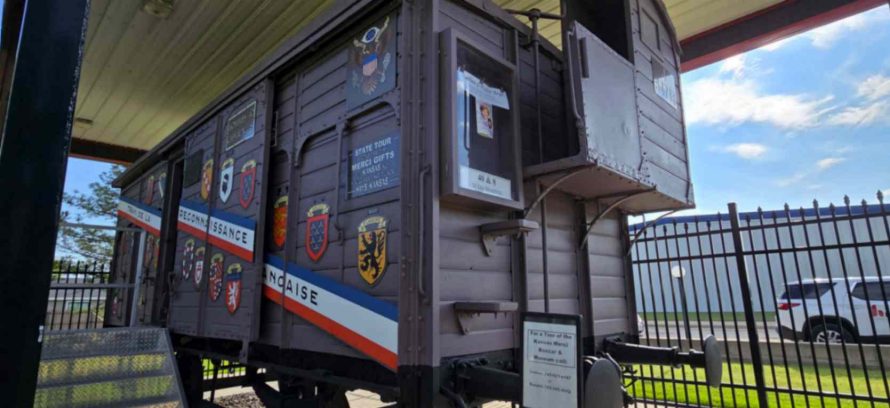
In Hays, Veterans Memorial Park offers a quiet yet powerful place to reflect on service and sacrifice—and it holds a unique piece of history: the Kansas Merci Boxcar. This vintage railcar is one of the famous “Forty and Eight” boxcars, so named because French letters stamped on the side read “Hommes 40” (40 Men) and “Chevaux 8” (8 Horses), indicating the original freight capacity of 40 men or 8 horses. Sent from France to the United States in 1949 as part of the Merci Train, it was a heartfelt gift thanking America for its aid during and after World War II. Standing beside it, you can almost imagine the journey it made across the Atlantic, carrying tokens of gratitude from French citizens.
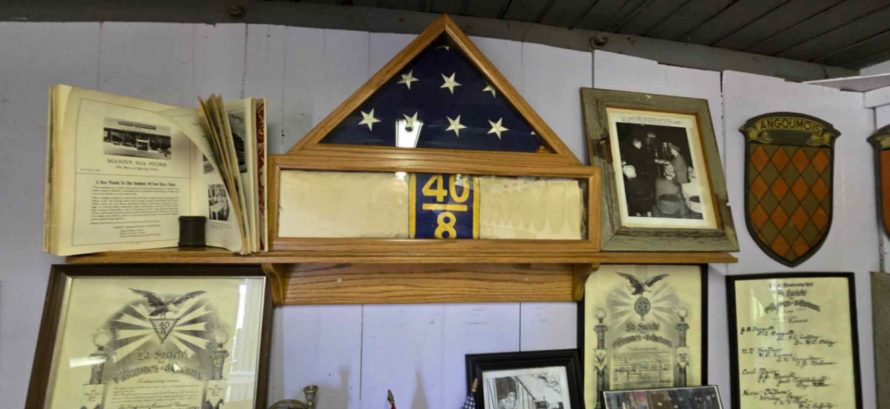
In 1947, the idea to send a “thank you” gift to the United States—honoring the $40 million worth of food and supplies sent to France and Italy—was proposed by André Picard, a French railroad worker and World War II veteran. The Merci Train’s donations came from more than six million people across France and Italy, featuring a wide array of gifts such as dolls, statues, clothing, decorative items, furniture, and even a Legion of Honour medal believed to have once belonged to Napoleon. The surrounding park features memorials honoring local veterans from every branch of service and major conflict, with monuments and plaques telling their stories. It’s a spot where history feels personal and a short visit often turns into a moment of quiet reflection before continuing your exploration of Hays. The park is located at 1305 Canterbury, Hays Ks.
Ellis County Historic Society
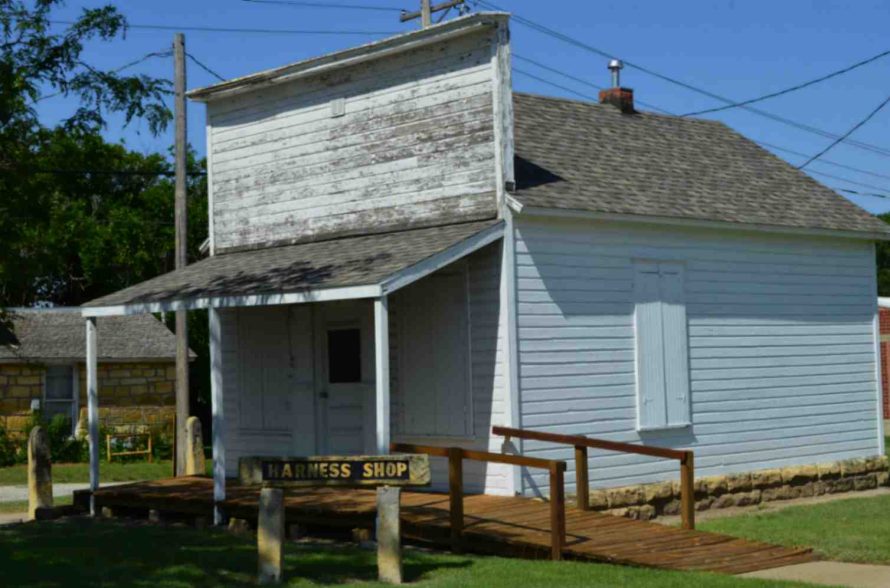
Located in the heart of Hays, Kansas, the Ellis County Historical Society stands as a key resource for understanding the region’s rich past, offering travelers an opportunity to explore the lives of those who shaped this part of the American plains. Founded in 1961, the society manages the Ellis County Historical Museum, which occupies a distinctive red-brick building originally constructed as the First Presbyterian Church in 1879. The organization is committed to preserving the area’s history, tracing its origins from Native American presence to the influx of immigrant settlers, notably the Volga Germans who left a lasting cultural mark.
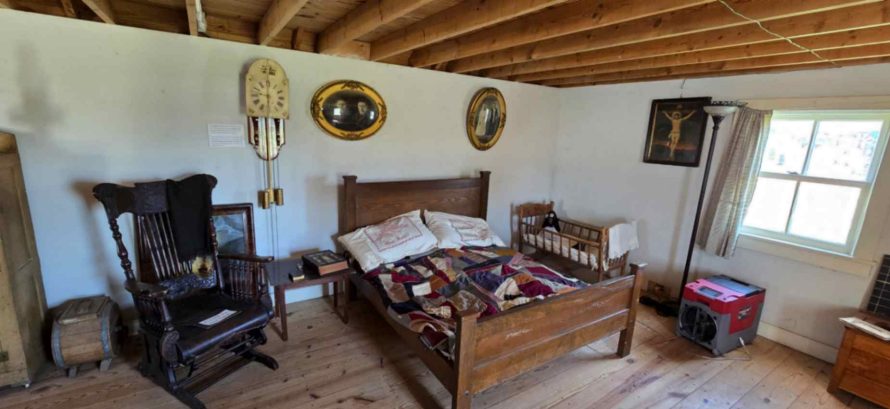
Visitors can examine a detailed collection of artifacts, documents, and photographs that span topics from the railroad’s influence on early settlement to the resilience of early pioneers. The museum grounds include several historic buildings that provide a tangible link to the past. The Stone Church, the oldest surviving church building in Ellis County, was built in 1879 with a 1926 addition, now integrated into the museum complex. Inside, preserved interiors offer a glimpse into the early congregation’s daily life, complemented by exhibits on pioneer challenges.
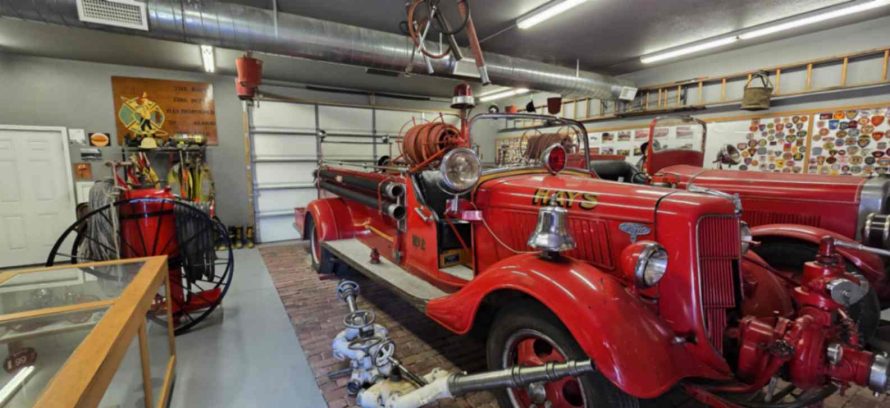
Nearby, the Younger Harness Shop, an original early 1900s structure moved to the site, displays saddles and tools that reflect the work of Ellis County ranchers. A replica Volga German Haus reveals the architectural and domestic practices of these settlers, while the Hays Fire Department Museum features vintage fire equipment. These buildings collectively invite travelers to engage with the area’s historical development through a hands-on experience.
Boot Hill
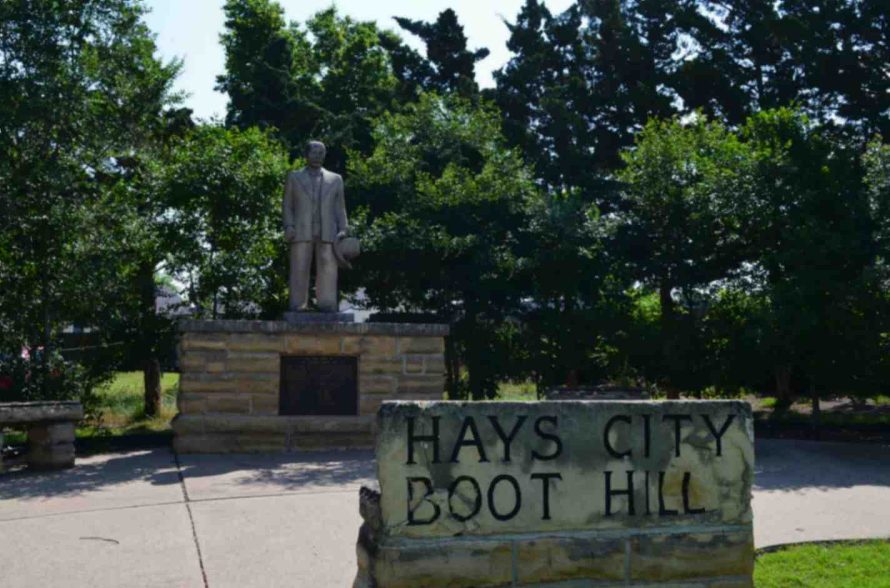
When Hays City was founded in the fall of 1867, a small hill about half a mile north of town became the site of its first burials, later known as Boot Hill Cemetery. Between 1868 and 1874, more than eighty people were laid to rest there—many of them having died “with their boots on,” victims of knives, guns, or the rope. Early frontier justice was swift and often deadly. The cemetery holds the remains of a wide range of characters, from sheriffs and state representatives to murders, horse thieves, and women living on the edge of society.
Famous figures of the Old West, including Wild Bill Hickok, Buffalo Bill, and Calamity Jane, all lived in Hays City during this turbulent time. In fact, Sheriff Hickok himself sent Bill Mulvey and Sam Strawhun to their final resting place on this very hill in 1869. While the first recorded death in Hays was from a mule accident in 1867, the following years saw increasing violence that shaped the history of the town. The last burial on Boot Hill took place in November 1874.
As Hays grew and homes were built near the cemetery, many graves were moved to Mount Allen Cemetery further north. Unfortunately, incomplete records mean the locations of many early graves are now lost. Today, visitors can explore the site at the northeast corner of Fort and 18th Street, where a statue called “The Homesteader,” created by local artist Pete Felten, commemorates Hays’s first cemetery. Contrary to popular belief, Hays’s Boot Hill Cemetery—older than the famous Dodge City site—was the original resting place for many who lived and died in the Old West.
Basilica Victoria
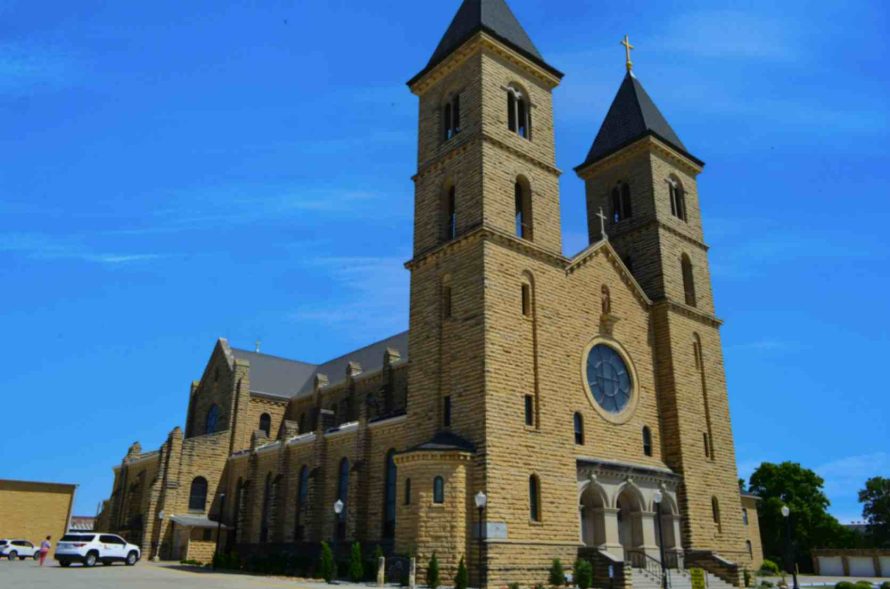
Eleven miles from Hays lies the town of Victoria Kansas. With a population of less than 2,000 it draws a lot of people who travel there to visit The Basilica of St. Fidelis. The Basilica is a significant landmark with a rich history dating back to the early 1900s. It is one of two Basilicas in Kansas recognized by the Vatican. The other being in Kansas City. Often called the “Cathedral of The Plains”, it was built by Volga German immigrants who settled in the area and wanted a large, sturdy church that reflected their faith and cultural heritage. The basilica is known for its Romanesque Revival architecture, featuring two tall towers, thick stone walls, and detailed stained glass windows. It was designed to serve as both a place of worship and a gathering spot for the community.
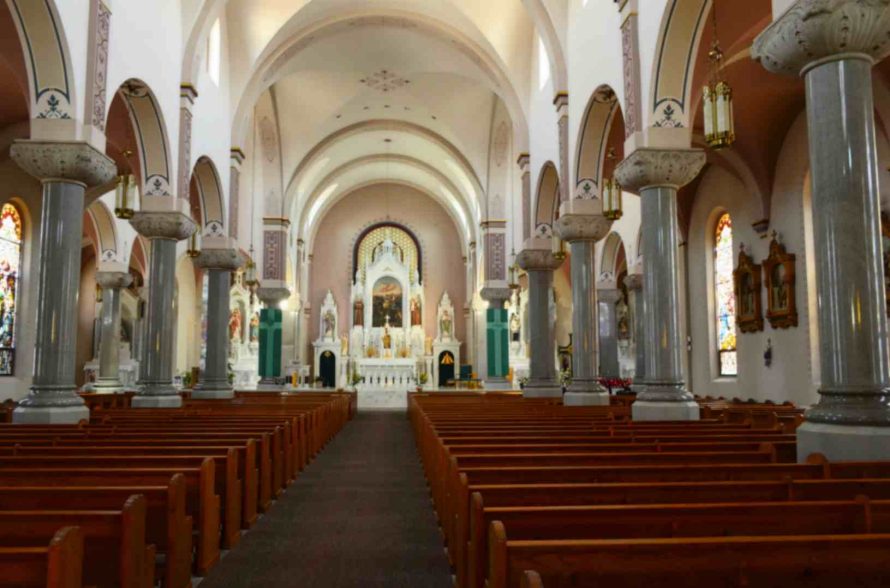
The basilica’s importance goes beyond its architecture. It represents the determination and craftsmanship of the settlers who built it with limited resources but strong commitment. Inside, visitors can see many original features, including hand-carved woodwork and artwork that tell stories about the community’s roots. The Basilica of St Fidelis was designated a minor basilica by the Vatican in 2014, recognizing its historical and spiritual significance. Today, it continues to serve as a place for religious services and community events, drawing visitors interested in history, architecture, and local culture.
Lodging in Hays Kansas
You have a lot of options for hotels in Hays Kansas. However, if you are looking for other alternatives to a hotel, you could stay where I did.
Creek Side Resort
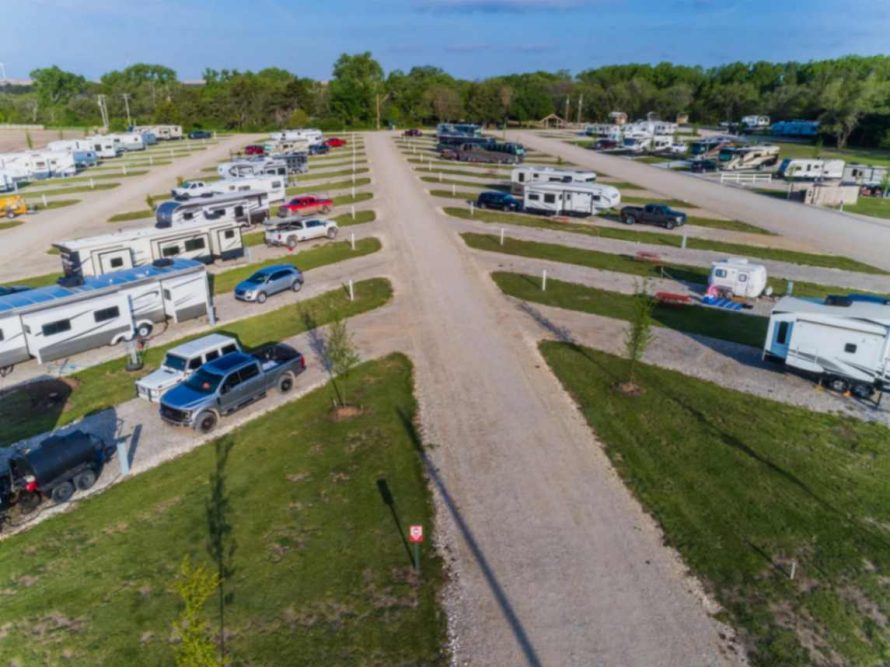
Located at 3301 US Highway 183 Alt, a short drive from downtown, Creek Side Resort is a great alternative to a hotel or motel. Even though you are just a couple of miles from everything, you feel like you are somewhere far out in the country, but with all the amenities.
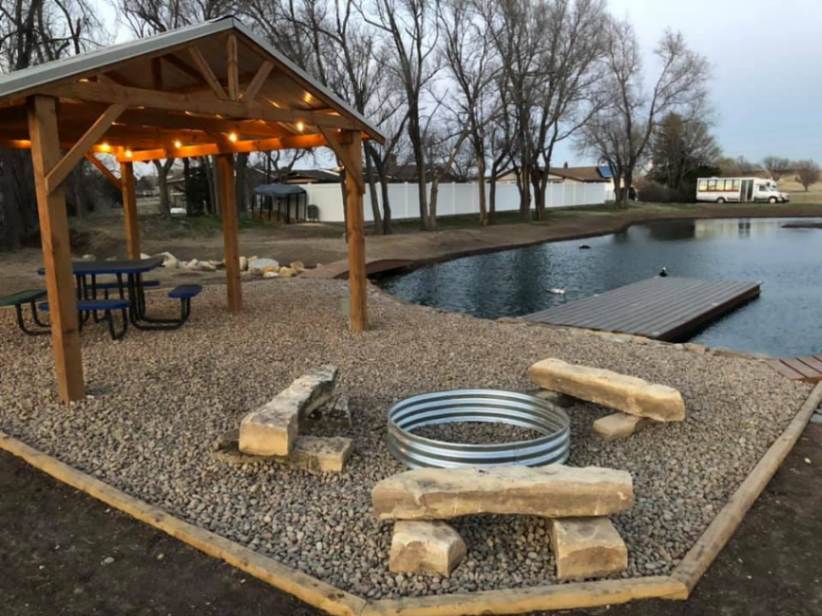
Creek Side RV Resort offers a quiet getaway once you are done seeing all the sites around Hays. I found it the perfect place to relax in a quiet country setting, and although there were a lot of people staying at the resort it was quiet and peaceful. They also have a ton of amenities.
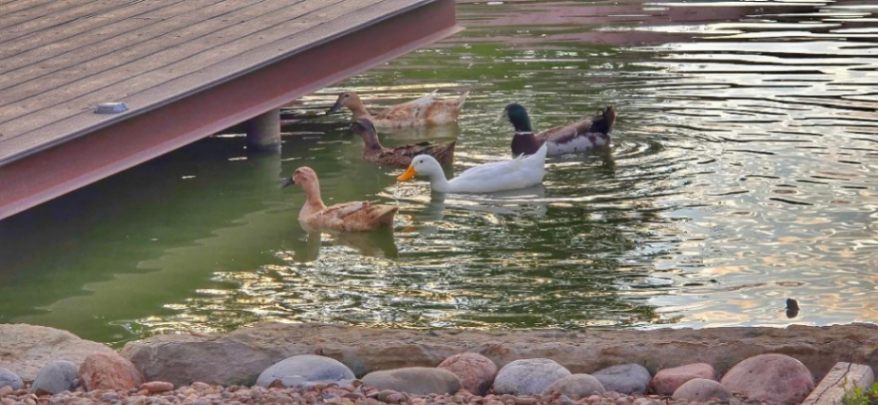
In addition to the corner store, which sells propane, essentials and gifts, there is a dog park and plenty of room to walk your pet. There is also a playground for the kids.
There is also a creek and a pond with a few ducks walking around. Live giant tortoises, and community firepits and free Wi-Fi throughout the park.
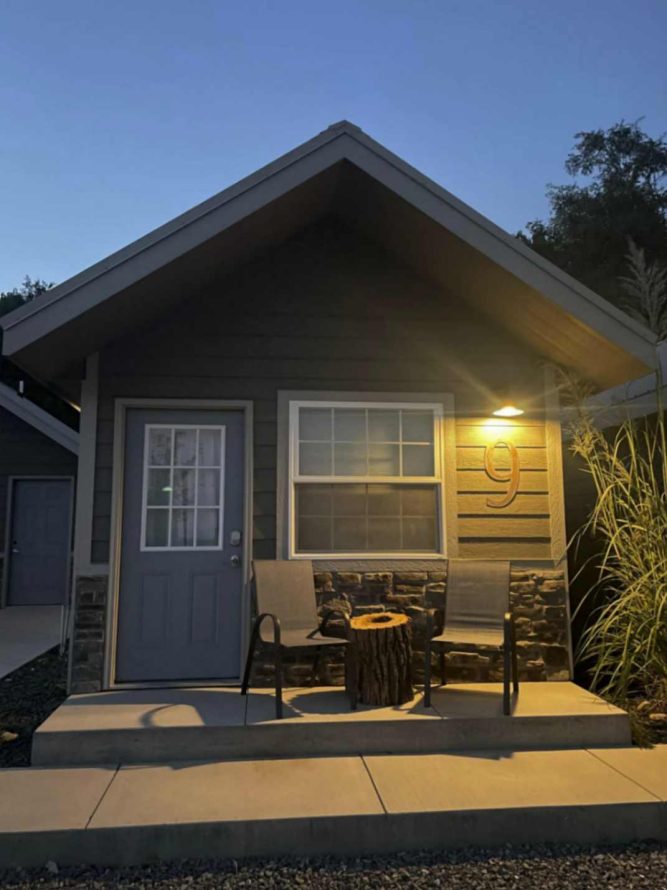
They also have the Fire Side Fort, which offers showers, bathrooms and laundry facilities plus coffee and a common area open 24 hours a day. From May thru Sep they have outdoor movies on the 1st Friday and 3rd Saturday of every month.
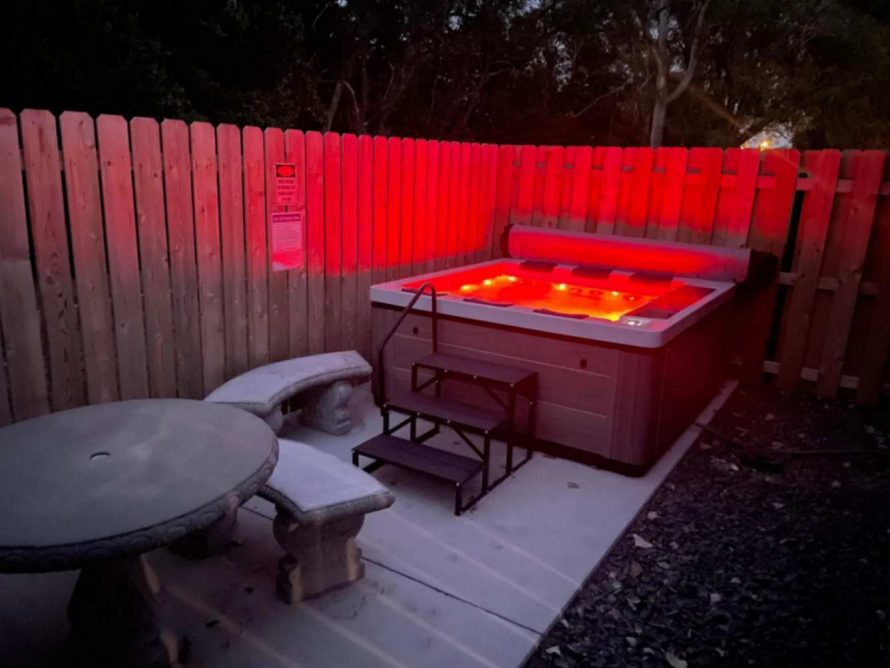
You don’t have to have an RV to enjoy the resort. I stayed in one of their cabins, they have nine of them. I stayed in number 9 which had a bedroom, small kitchen, full bath and living room, plus a hot tub out back.
If you are looking for a nice quiet, peaceful place to stay, I can’t say enough good things about this resort. You will love it.
Hays Kansas is a great place to visit. I thoroughly enjoyed my time there. Hays is full of history and has a lot of things to do. If you are on a road trip or find yourself anywhere near Hays I would recommend spending a couple of days exploring the area. And, if you run into Pete Felten, tell him I said hello.


Leave a Reply